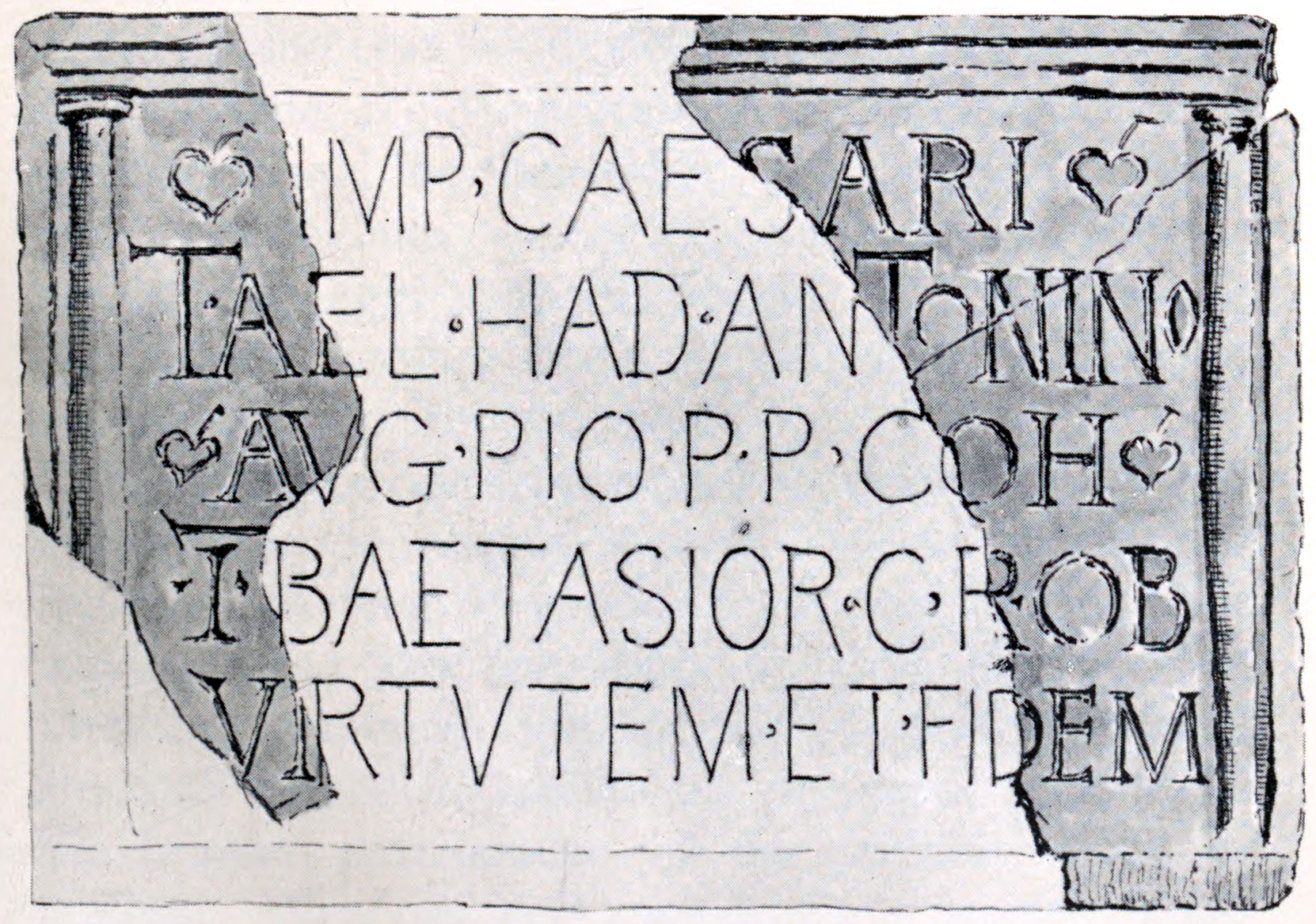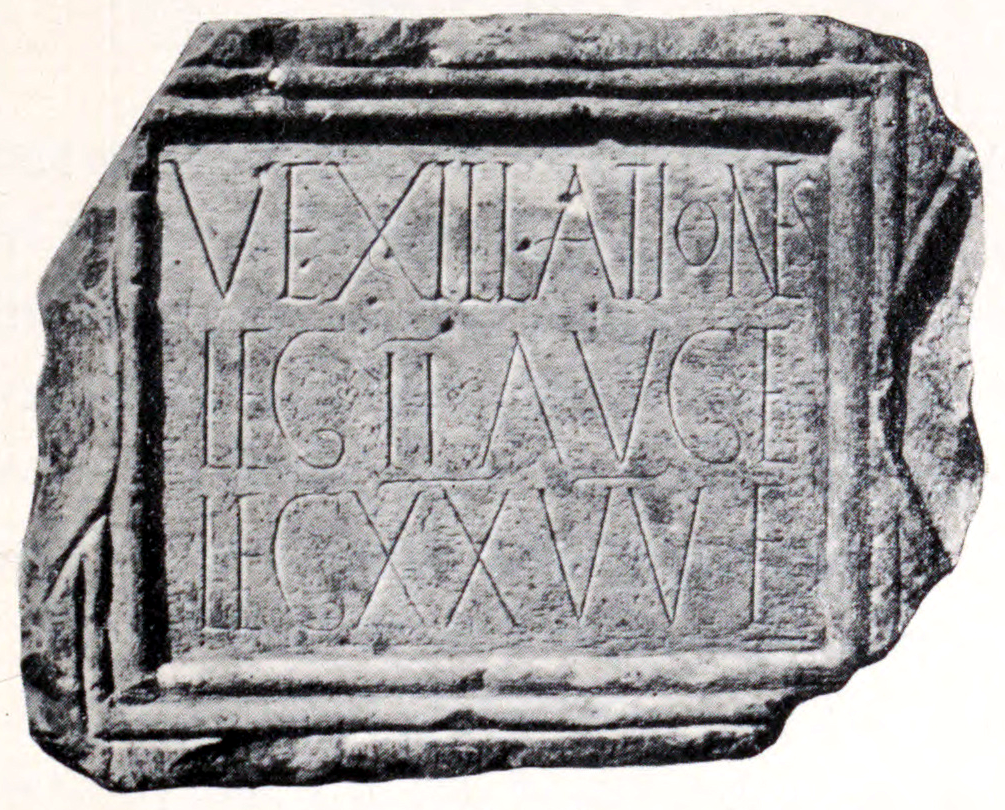Bar Hill Fort on:
[Wikipedia]
[Google]
[Amazon]


 Bar Hill Fort was a
Bar Hill Fort was a 
File:Bar Hill Fort 20090619 headquarters.jpg, principia (headquarters)
File:Bar Hill Fort 20090619 well in courtyard.jpg, well in courtyard
File:Bar Hill Fort 20090619 bath house from east.jpg, bath house from east
File:Bar Hill Fort 20090619 laconicum.jpg,



 Bar Hill Fort was a
Bar Hill Fort was a Roman fort
In the Roman Republic and the Roman Empire, the Latin word ''castrum'', plural ''castra'', was a military-related term.
In Latin usage, the singular form ''castrum'' meant 'fort', while the plural form ''castra'' meant 'camp'. The singular and ...
on the Antonine Wall
The Antonine Wall, known to the Romans as ''Vallum Antonini'', was a turf fortification on stone foundations, built by the Romans across what is now the Central Belt of Scotland, between the Firth of Clyde and the Firth of Forth. Built some ...
in Scotland
Scotland (, ) is a country that is part of the United Kingdom. Covering the northern third of the island of Great Britain, mainland Scotland has a border with England to the southeast and is otherwise surrounded by the Atlantic Ocean to ...
. It was built around the year 142 A.D.. Older maps and documents sometimes spell the name as Barr Hill. A computer generated fly around for the site has been produced. Lidar
Lidar (, also LIDAR, or LiDAR; sometimes LADAR) is a method for determining ranges (variable distance) by targeting an object or a surface with a laser and measuring the time for the reflected light to return to the receiver. It can also be ...
scans have been done along the length of the wall including Bar Hill. Sir George Macdonald wrote about the excavation of the site. Many other artefacts have also been found at Shirva, about a mile away on the other side of Twechar
Twechar is a small former mining village historically in Dunbartonshire and administered by the council area of East Dunbartonshire, Scotland close to the boundary with North Lanarkshire. It lies between the larger towns of Cumbernauld, Kilsyth ...
.
Many Roman forts along the wall held garrisons of around 500 men. Larger forts like Castlecary
Castlecary () is a small historic village in North Lanarkshire, Scotland, directly adjacent to the border with Falkirk. It has long been associated with infrastructure, being adjacent to a bridged river, a Roman fort and roads, a nationwide can ...
and Birrens
Blatobulgium was a Roman fort, located at the modern-day site known as Birrens, in Dumfriesshire, Scotland.
Name
Blatobulgium is recorded in the Antonine Itinerary. The name derives from the Brittonic roots ''*blāto-'' 'bloom, blossom' or ''*bl� ...
had a nominal cohort of 1000 men but probably sheltered women and children as well although the troops were not allowed to marry. There is likely too to have been large communities of civilians around the site.
An altar (RIB 2167) to Silvanus was found in 1895 on Bar Hill. It's thought to have originated from a small shrine outside the fort. The altar is now kept in the Hunterian Museum, Glasgow
Glasgow ( ; sco, Glesca or ; gd, Glaschu ) is the most populous city in Scotland and the fourth-most populous city in the United Kingdom, as well as being the 27th largest city by population in Europe. In 2020, it had an estimated popu ...
along with others like the one found at Castlecary
Castlecary () is a small historic village in North Lanarkshire, Scotland, directly adjacent to the border with Falkirk. It has long been associated with infrastructure, being adjacent to a bridged river, a Roman fort and roads, a nationwide can ...
. A 43 foot deep well was discovered at the site. Several item were recovered from the well. It's possible they were dumped there when the site was abandoned. Shoes from men, women and children were found leading to suggestions of family life. Other recovered items include an altar, bones, shells and coins. Structural materials like building columns, wooden beams were found as was part of the pulley of the well. Videos of some reconstructed objects like a barrel, a window. and various columns have been produced as well as one of a bust of Silenus
In Greek mythology, Silenus (; grc, Σειληνός, Seilēnós, ) was a companion and tutor to the wine god Dionysus. He is typically older than the satyrs of the Dionysian retinue ('' thiasos''), and sometimes considerably older, in which ...
.
Bar Hill Fort was one of over a dozen forts built along the Antonine Wall from around 140 AD. These follow a short route across Scotland’s central belt
The Central Belt of Scotland is the area of highest population density within Scotland. Depending on the definition used, it has a population of between 2.4 and 4.2 million (the country's total was around 5.4 million in 2019), including Gre ...
which was largely followed in the 18th century when constructing the Forth and Clyde canal
The Forth and Clyde Canal is a canal opened in 1790, crossing central Scotland; it provided a route for the seagoing vessels of the day between the Firth of Forth and the Firth of Clyde at the narrowest part of the Scottish Lowlands. This allowe ...
. On the south-facing slope of the hill is the headquarters; it is the biggest building that can be seen. The remains of a Roman bathhouse can also be observed.

laconicum
The ''laconicum'' (i.e. Spartan, ''sc.'' ''balneum'', bath). Cf. Greek ''pyriaterion to lakonikon'' "the Laconian vapour-bath"; , . was the dry sweating room of the Roman '' thermae'', contiguous to the ''caldarium'' or hot room. The name was giv ...

References
{{Authority control Forts of the Antonine Wall Archaeological sites in East Dunbartonshire Roman auxiliary forts in Scotland